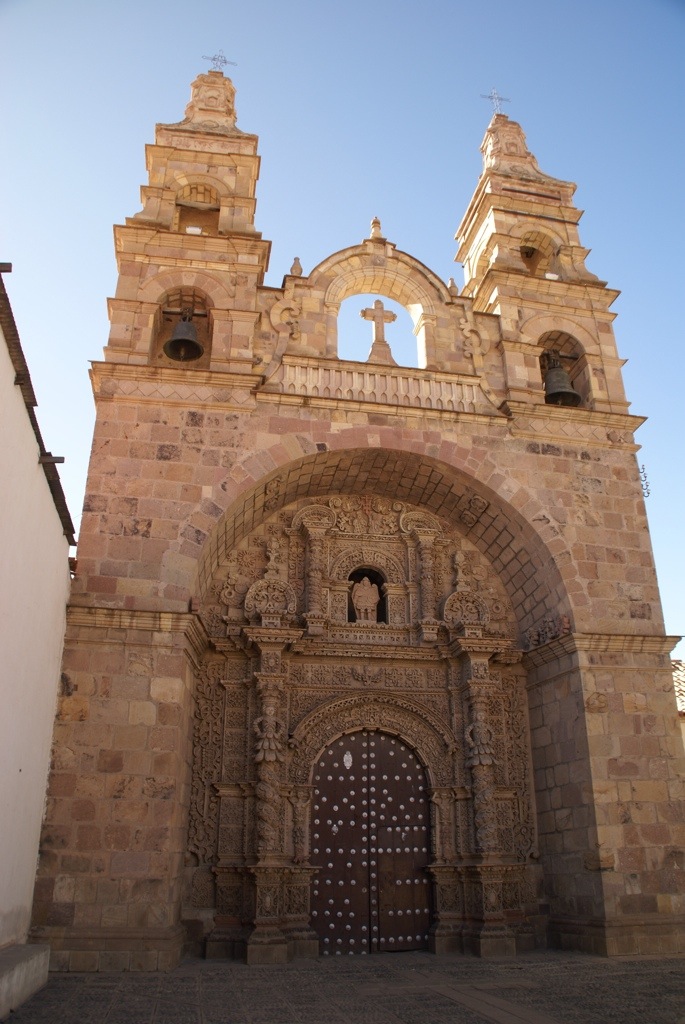

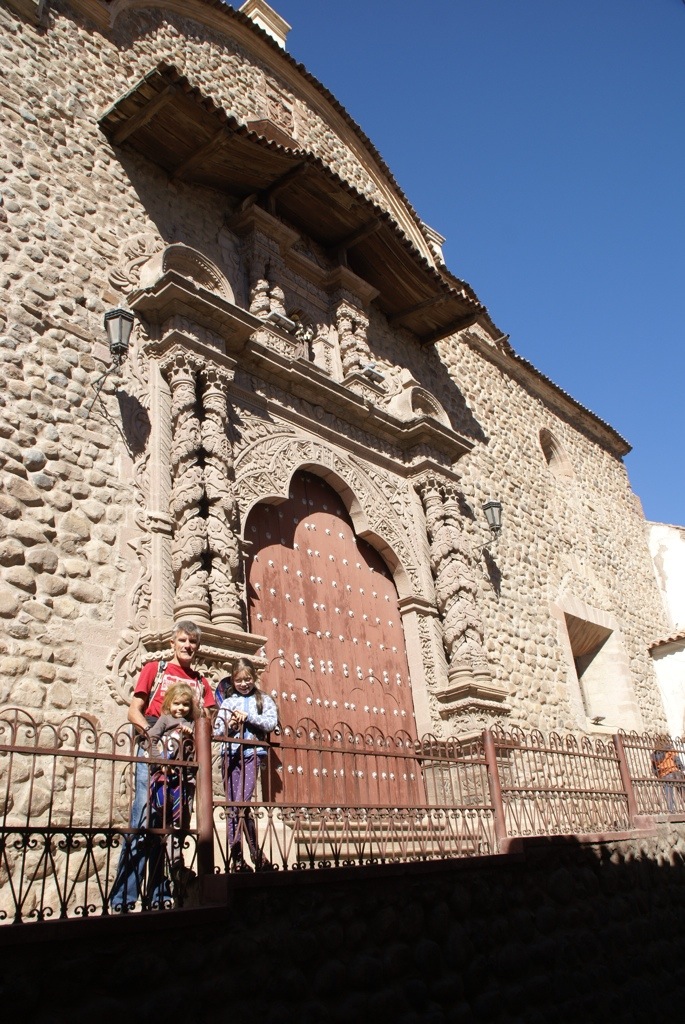 We stayed the night so we could visit the Casa Nacional de la Moneda, the Potosi mint the next day. This is where some of the silver was made into coins first for the Spanish empire and then for Bolivia. The museum was very good and we had a good guided tour.
We stayed the night so we could visit the Casa Nacional de la Moneda, the Potosi mint the next day. This is where some of the silver was made into coins first for the Spanish empire and then for Bolivia. The museum was very good and we had a good guided tour.
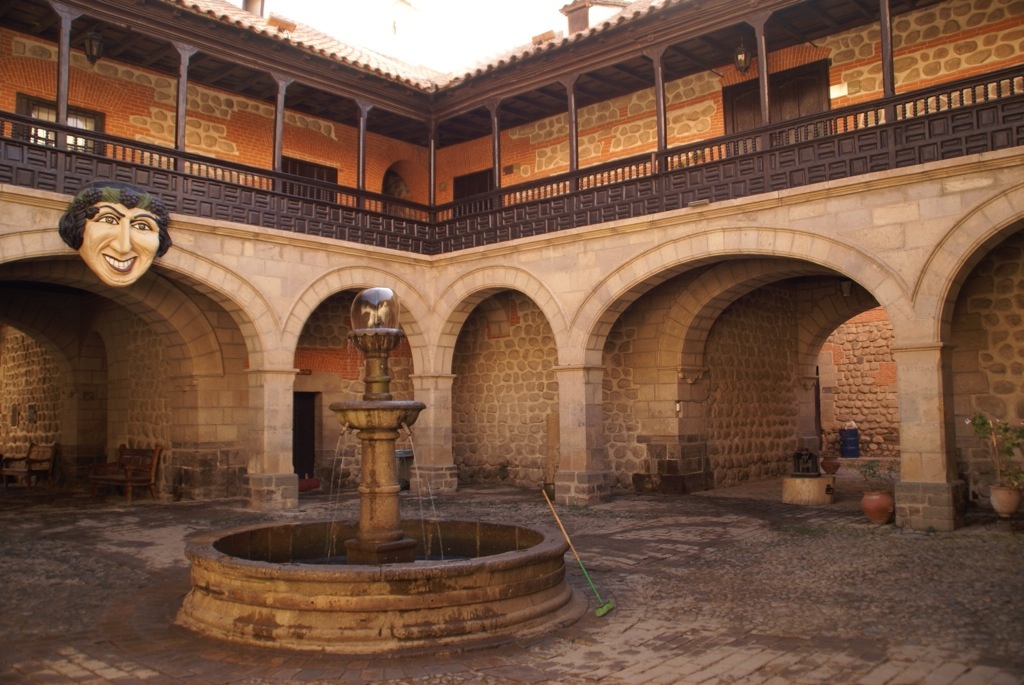

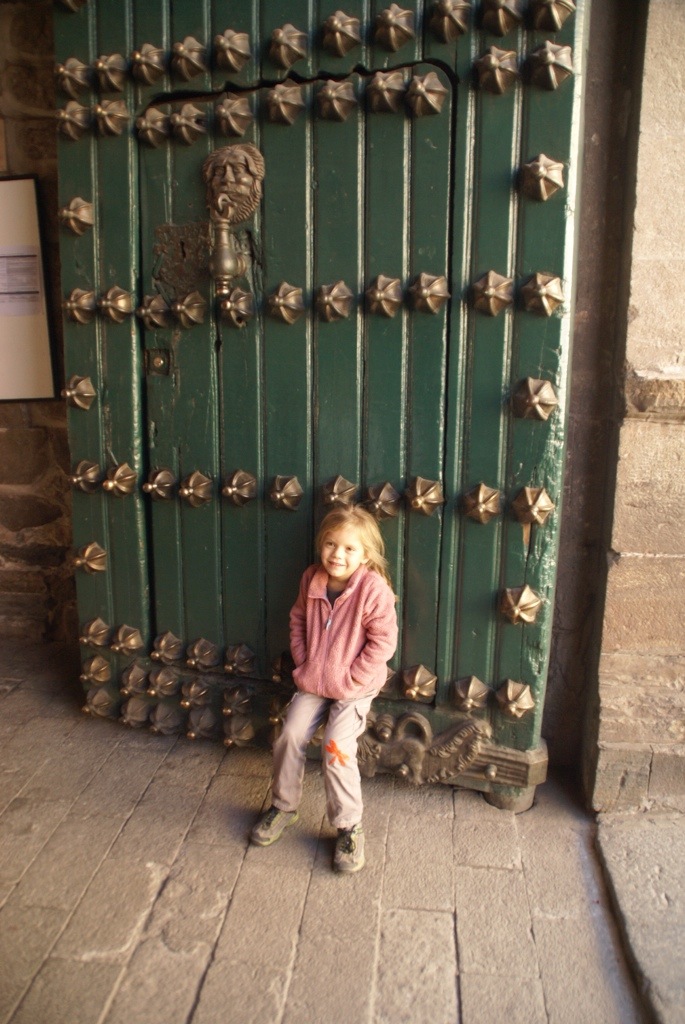 On the way back to the truck the street was full of marching bands as the following day was Bolivian Independence Day and so they were all practicing.
On the way back to the truck the street was full of marching bands as the following day was Bolivian Independence Day and so they were all practicing.
 After our Potsoi experience and that of other Bolivian towns we were unsure of whether to go to Sucre. Whilst the scenery in Bolivia is fantastic the towns are not so inspiring. However we decided to push onto Sucre and were really glad we did.
Sucre is the administrative capital of Bolivia and was where Bolivian independence was proclaimed on 6 August 1825 so it seemed appropriate to be there for Independence Day. Immediately on arriving the city felt warmer and more welcoming. The city is lower at about 2750m so it was warmer in temperature but the streets were also wider and we found a place to park up quite easily. When we arrived 2 fellow overlanders were also there who we had meant a few times before: Max and Tania and their kids as well as Michael and Natasha.
We headed into town that evening which was jammed with people marching for the independence celebrations. We found a lovely French restaurant and had a great meal with a nice bottle of Bolivian ( yes, Bolivian!) red wine.
We spent a couple of days in Sucre and thoroughly enjoyed the city. It was very relaxing and the centre of town was very pretty to wander around. As with many colonial cities we have visited the buildings are all painted white.
After our Potsoi experience and that of other Bolivian towns we were unsure of whether to go to Sucre. Whilst the scenery in Bolivia is fantastic the towns are not so inspiring. However we decided to push onto Sucre and were really glad we did.
Sucre is the administrative capital of Bolivia and was where Bolivian independence was proclaimed on 6 August 1825 so it seemed appropriate to be there for Independence Day. Immediately on arriving the city felt warmer and more welcoming. The city is lower at about 2750m so it was warmer in temperature but the streets were also wider and we found a place to park up quite easily. When we arrived 2 fellow overlanders were also there who we had meant a few times before: Max and Tania and their kids as well as Michael and Natasha.
We headed into town that evening which was jammed with people marching for the independence celebrations. We found a lovely French restaurant and had a great meal with a nice bottle of Bolivian ( yes, Bolivian!) red wine.
We spent a couple of days in Sucre and thoroughly enjoyed the city. It was very relaxing and the centre of town was very pretty to wander around. As with many colonial cities we have visited the buildings are all painted white.
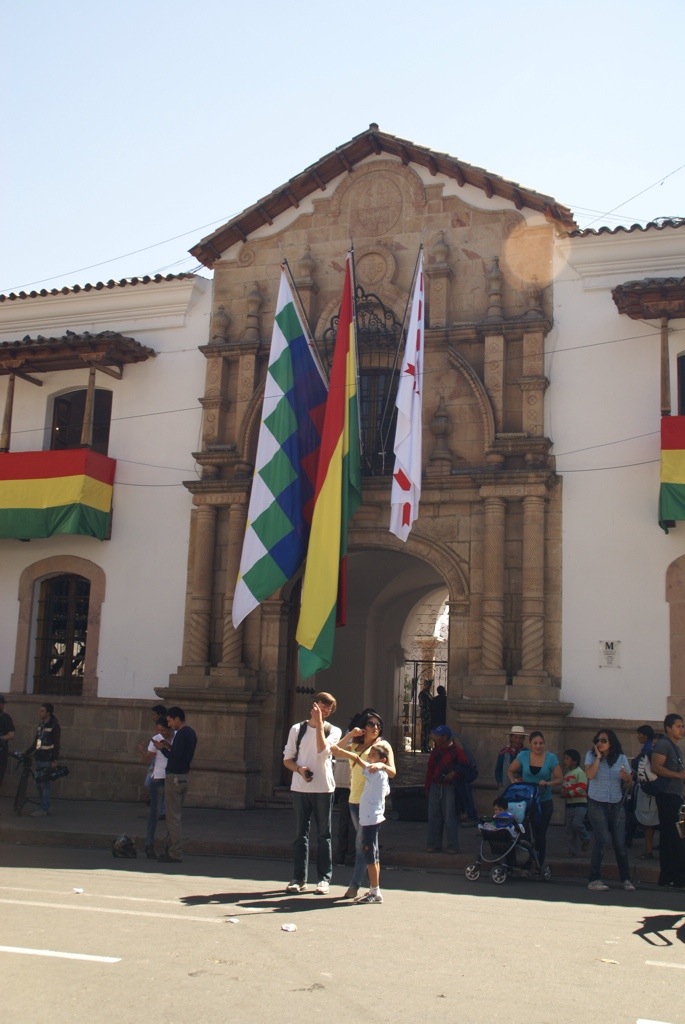
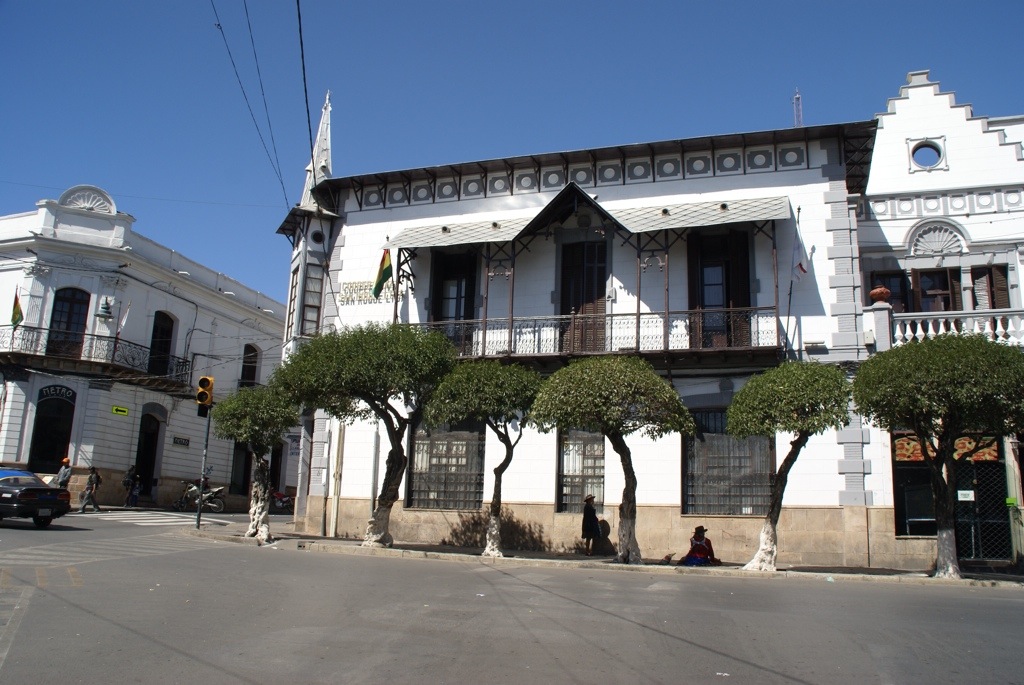
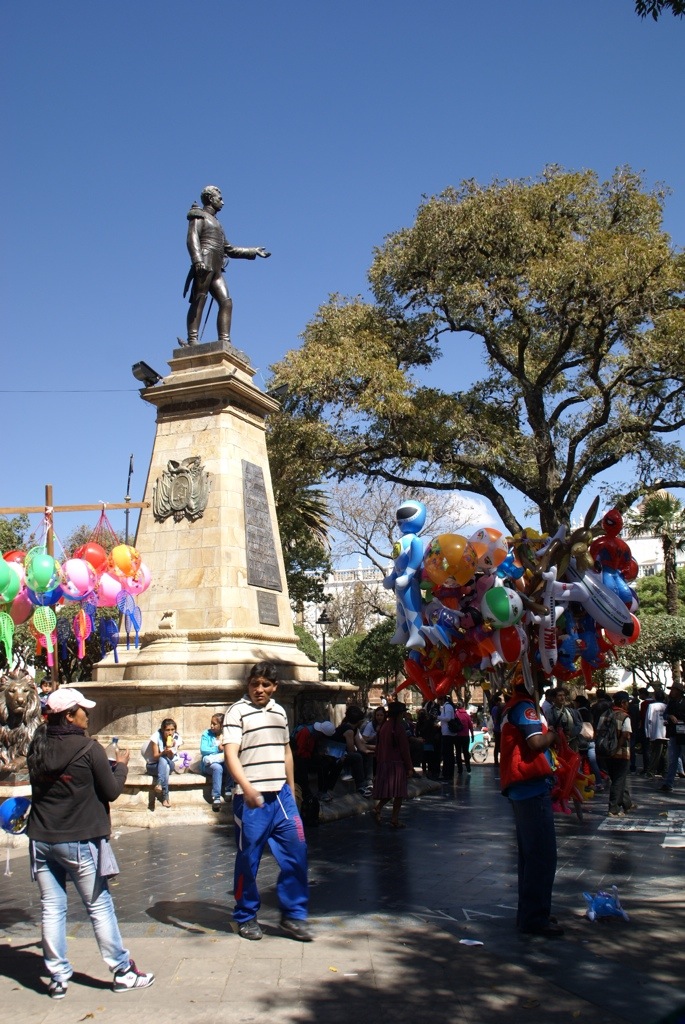
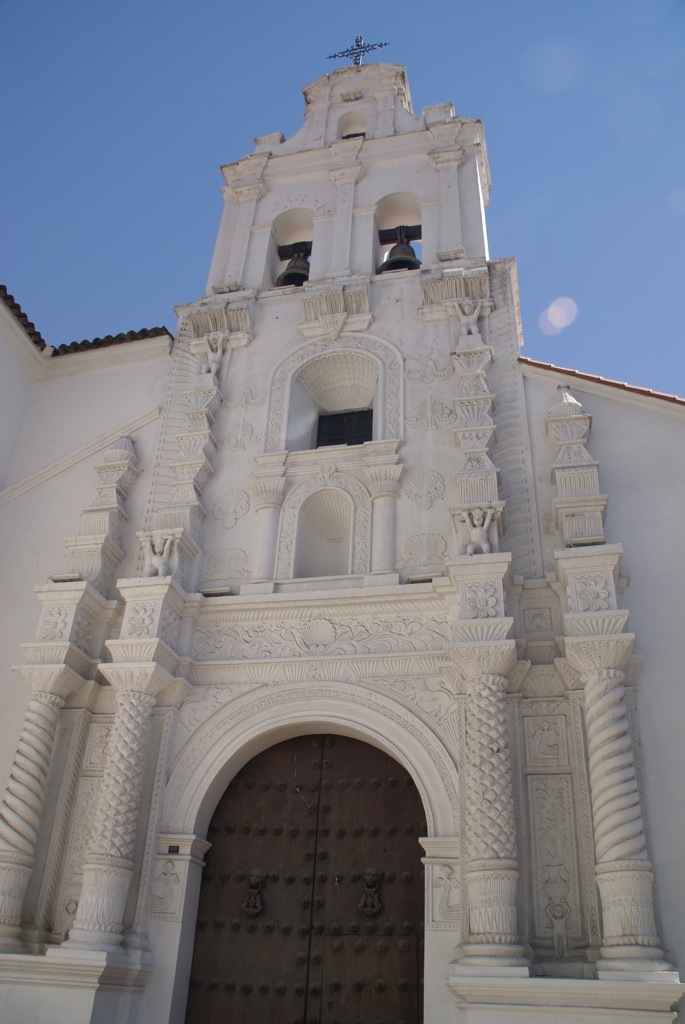 On Independence Day we went into town to see the marching bands but we missed the President who was visiting.
On Independence Day we went into town to see the marching bands but we missed the President who was visiting.

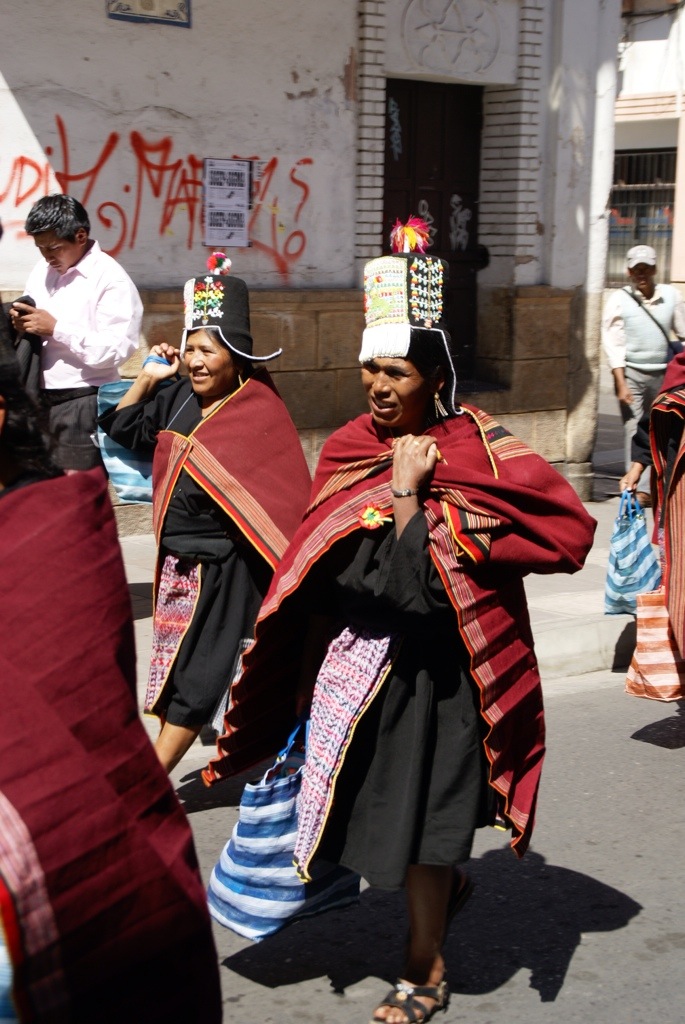
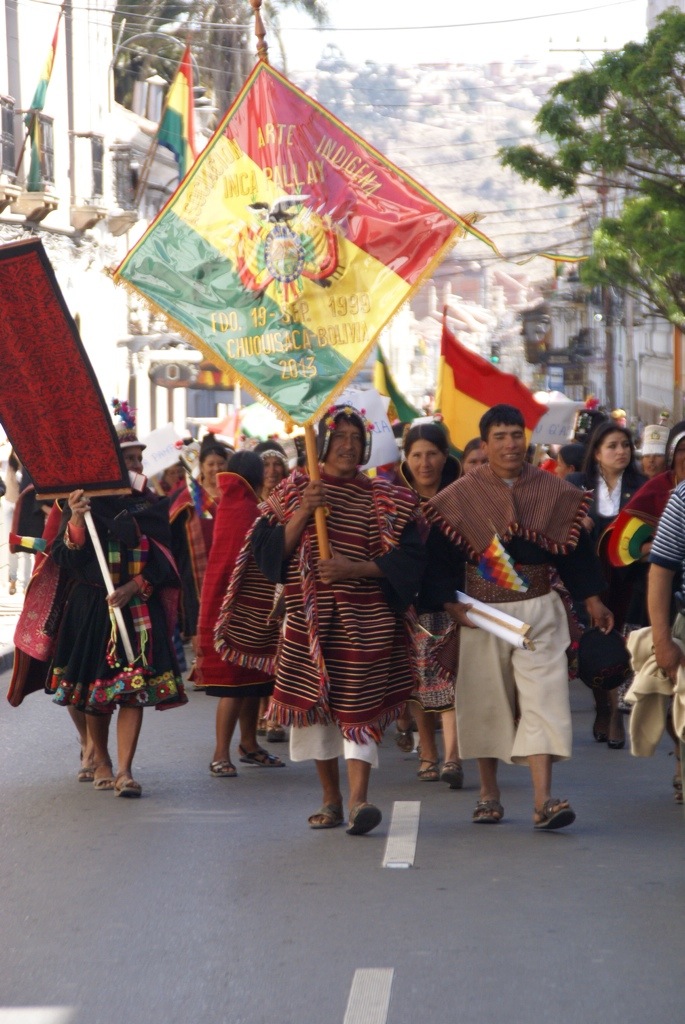 The following day we went to the Casa de La Libertad to see the museum where the Bolivian Declaration of Independence was signed. This gave an interesting insight into Bolivian history.
The following day we went to the Casa de La Libertad to see the museum where the Bolivian Declaration of Independence was signed. This gave an interesting insight into Bolivian history.
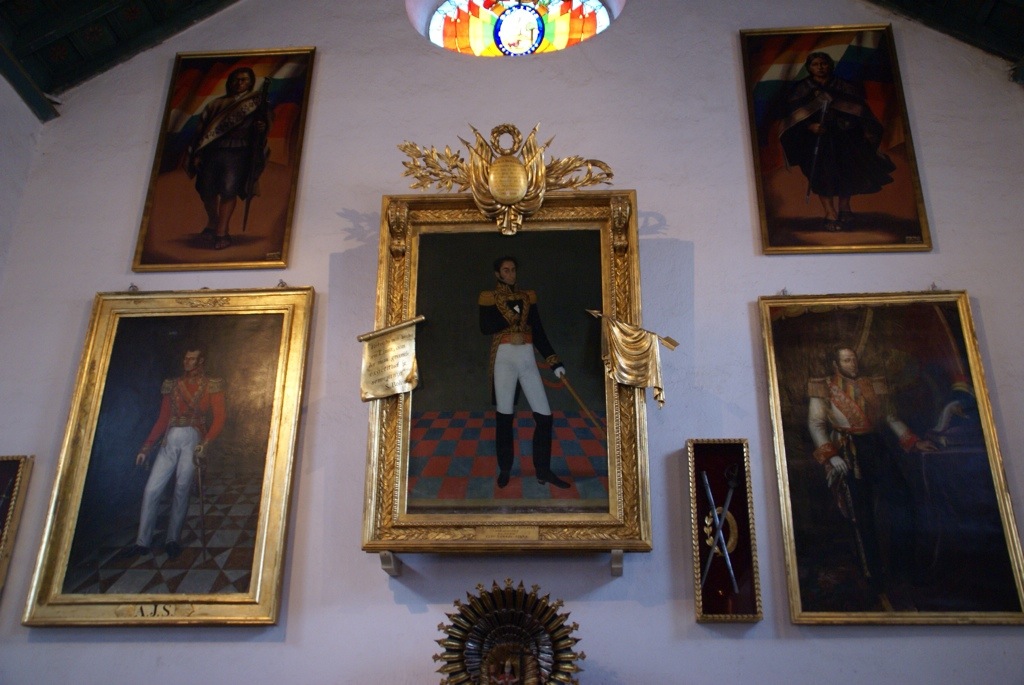
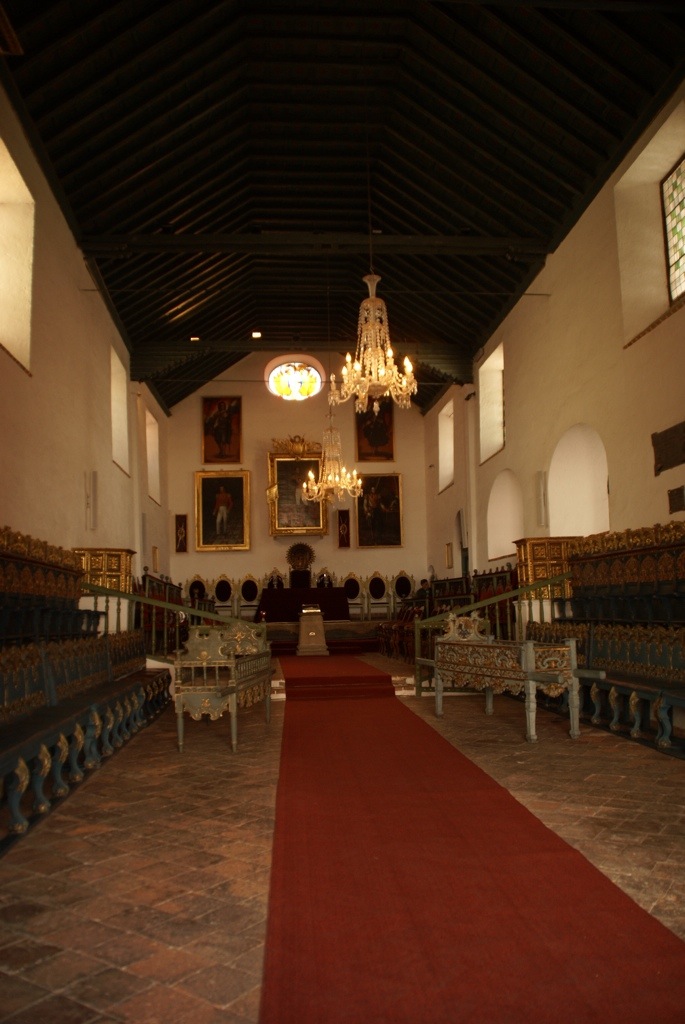
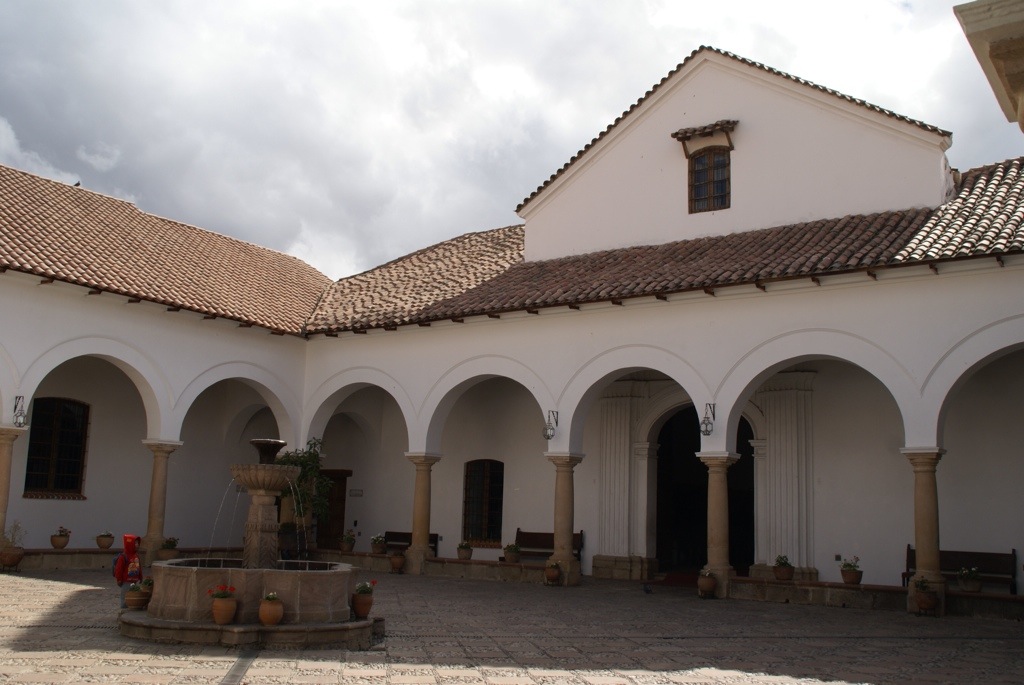

interesting as ever!